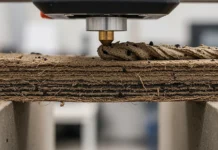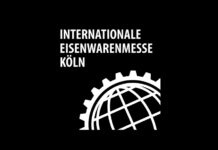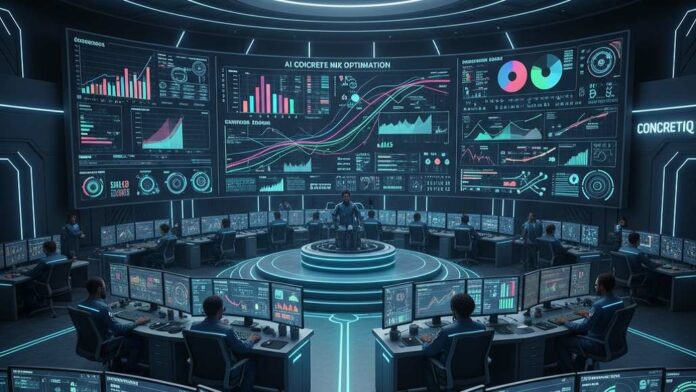The concrete industry stands at the threshold of a revolutionary transformation where artificial intelligence converges with traditional materials science to create unprecedented opportunities for optimization and innovation. AI based concrete mix design represents a paradigmatic shift from empirical, experience-driven approaches to data-driven, algorithmic optimization that can achieve performance targets while minimizing material usage, costs, and environmental impact. This technological evolution fundamentally redefines how concrete formulations are developed, validated, and continuously improved throughout their application lifecycles.
Traditional concrete mix design methodologies, while proven through decades of successful application, rely heavily on human expertise, trial-and-error approaches, and conservative safety factors that often result in over-designed mixtures that exceed performance requirements at unnecessary cost. Artificial intelligence systems can process vast databases of historical performance data, materials properties, and environmental conditions to identify optimal formulations that precisely meet specified requirements while minimizing resource consumption and maximizing economic efficiency.
The integration of machine learning algorithms with concrete materials science creates intelligent design systems capable of learning from each successful application, continuously refining their optimization capabilities, and adapting to new materials, environmental conditions, and performance requirements. These systems represent the convergence of computational power, materials knowledge, and practical construction experience into unified design platforms that enhance both performance and sustainability outcomes.
Revolutionary AI in Concrete Technology
Artificial intelligence applications in concrete technology encompass multiple algorithms and computational approaches that address different aspects of mix design optimization. Neural networks excel at identifying complex, non-linear relationships between material properties and performance outcomes that would be impossible to detect through traditional statistical methods. These systems can process hundreds of variables simultaneously to identify optimal combinations that achieve targeted performance characteristics.
Machine learning algorithms analyze historical performance data from thousands of concrete mixtures to identify patterns and correlations that inform optimization strategies. Supervised learning approaches use known input-output relationships to train predictive models, while unsupervised learning techniques discover hidden patterns in materials behavior that can reveal new optimization opportunities.
Deep learning systems create multi-layered analytical models that can process raw materials data, environmental conditions, and performance requirements to generate optimized mix designs with remarkable accuracy. These systems continuously improve their predictive capabilities as they process additional data, creating self-enhancing design platforms that become more effective over time.
Genetic algorithms simulate evolutionary processes to explore vast solution spaces and identify optimal concrete formulations that might be overlooked by traditional design approaches. These algorithms can simultaneously optimize multiple performance objectives, such as strength, durability, workability, and cost, to achieve balanced solutions that satisfy complex design requirements.
Advanced Mix Optimization Strategies
Mix optimization through artificial intelligence encompasses comprehensive analysis of material interactions, performance trade-offs, and cost considerations to achieve truly optimal formulations. Multi-objective optimization algorithms can simultaneously balance competing performance requirements while minimizing environmental impact and material costs, creating solutions that satisfy multiple stakeholder priorities.
Particle swarm optimization techniques model the collective behavior of intelligent agents to explore design space efficiently and identify optimal solutions through collaborative search processes. These algorithms are particularly effective for concrete mix design because they can handle the complex, multi-dimensional optimization problems inherent in balancing multiple performance requirements and material constraints.
Constraint satisfaction algorithms ensure that optimized mix designs comply with applicable codes, standards, and project-specific requirements while maximizing performance within specified limitations. These systems can incorporate regulatory requirements, material availability constraints, and environmental limitations directly into the optimization process.
Real-time optimization capabilities enable dynamic adjustment of concrete formulations based on changing conditions, material availability, or performance requirements. These systems can respond immediately to supply chain disruptions, quality variations, or specification changes while maintaining optimal performance characteristics.
Sustainable Cement Production Through Intelligence
AI-driven optimization extends beyond individual mix design to encompass comprehensive cement production processes that minimize environmental impact while maximizing efficiency. Intelligent systems can optimize raw material selection, energy consumption, and production scheduling to reduce carbon footprint while maintaining product quality and delivery reliability.
Alternative material integration becomes more sophisticated through AI systems that can evaluate the performance implications of utilizing recycled materials, industrial byproducts, and sustainable additives. These systems can predict long-term performance characteristics of innovative materials combinations that would require years of testing through traditional validation approaches.
Carbon footprint optimization algorithms identify formulations that minimize CO₂ emissions throughout concrete lifecycles, from raw material extraction through end-of-life disposal or recycling. These systems can balance performance requirements against environmental impact to achieve truly sustainable concrete solutions.
Energy efficiency optimization in cement production utilizes AI algorithms to minimize fuel consumption, optimize kiln operations, and reduce overall production energy requirements. These systems can identify process improvements that significantly reduce environmental impact while maintaining or improving product quality.
Construction Technology Integration
The integration of AI-based mix design with construction technology creates seamless workflows that optimize both material performance and construction processes. Real-time quality control systems can monitor concrete properties during production and placement, providing feedback that enables immediate optimization adjustments.
Predictive analytics algorithms forecast concrete performance under various environmental conditions and loading scenarios, enabling proactive optimization strategies that enhance long-term durability and reduce maintenance requirements. These predictions consider climate data, structural loading patterns, and exposure conditions to optimize mix designs for specific applications.
Internet of Things integration connects mix design systems with construction equipment, environmental sensors, and quality monitoring devices to create comprehensive optimization networks. These systems can adjust mix designs in real-time based on placement conditions, weather patterns, and quality feedback from the field.
Digital twin technology creates virtual replicas of concrete structures that incorporate real-time performance data and enable continuous optimization of material properties and construction processes. These systems provide unprecedented insights into concrete behavior while supporting proactive maintenance and optimization strategies.
Performance Prediction and Validation
AI systems excel at predicting long-term concrete performance characteristics based on initial mix design parameters and early-age testing results. Advanced algorithms can forecast strength development, durability performance, and service life expectations with accuracy that surpasses traditional prediction methods while requiring significantly less time and testing resources.
Accelerated testing interpretation through artificial intelligence can extract maximum information from limited testing data while identifying performance trends that might be overlooked through traditional analysis methods. These systems can correlate short-term testing results with long-term performance expectations, enabling rapid validation of new formulations.
Risk assessment algorithms evaluate the probability of various failure modes and performance issues based on mix design parameters, environmental conditions, and historical performance data. These systems provide comprehensive risk profiles that inform decision-making while identifying opportunities for performance improvement.
Quality prediction systems analyze production data, material properties, and environmental conditions to forecast final concrete quality before placement occurs. These predictive capabilities enable proactive quality control measures that prevent defective material from being incorporated into structures.
Economic Optimization and Cost Control
Artificial intelligence enables sophisticated economic optimization that considers material costs, labor requirements, equipment utilization, and long-term maintenance implications to identify truly cost-effective concrete solutions. These systems can balance initial material costs against lifecycle expenses to achieve optimal economic outcomes.
Supply chain optimization algorithms coordinate material procurement, delivery scheduling, and inventory management to minimize costs while ensuring material availability and quality consistency. These systems can respond dynamically to market conditions, transportation constraints, and seasonal availability patterns.
Value engineering applications identify opportunities to reduce costs without compromising performance through intelligent material substitution, optimization of component proportions, and elimination of unnecessary safety factors. AI systems can evaluate thousands of potential modifications simultaneously to identify optimal cost reduction strategies.
Lifecycle cost analysis incorporates maintenance requirements, service life expectations, and end-of-life disposal costs into mix design optimization decisions. These comprehensive economic assessments ensure that initial cost savings do not result in increased long-term expenses.
Future Development and Market Integration
The continued evolution of AI-based concrete mix design promises even greater optimization capabilities as computational power increases and historical performance databases expand. Quantum computing applications may enable optimization of previously intractable problems while processing enormous datasets in reasonable timeframes.
Autonomous concrete production systems that operate with minimal human intervention represent the ultimate integration of AI-based design with automated manufacturing processes. These systems could optimize formulations continuously while adapting to changing conditions and requirements in real-time.
Blockchain technology integration can provide immutable records of mix design decisions, performance outcomes, and optimization processes while enabling transparent sharing of optimization insights across the industry. These distributed databases could accelerate innovation while maintaining intellectual property protections.
Augmented reality applications can provide construction professionals with immediate access to AI-optimized mix design recommendations based on real-time site conditions, material availability, and performance requirements. These tools could democratize access to advanced optimization capabilities while improving decision-making in field applications.
Conclusion
AI-based concrete mix design represents a fundamental transformation in how construction materials are formulated, optimized, and continuously improved throughout their application lifecycles. By leveraging artificial intelligence capabilities to process vast datasets, identify complex optimization opportunities, and predict long-term performance outcomes, these systems enable unprecedented efficiency in material utilization while meeting increasingly demanding performance requirements.
The successful implementation of AI-based design systems requires integration of computational expertise, materials science knowledge, and practical construction experience supported by comprehensive databases and validation protocols. As these systems mature and demonstrate their capabilities through successful applications, their adoption will accelerate across the construction industry.
The future of concrete mix design lies in intelligent systems that continuously learn, adapt, and optimize to meet evolving performance requirements while minimizing environmental impact and economic costs. These technologies will play crucial roles in advancing sustainable construction practices while enabling new possibilities for structural design and construction efficiency.































